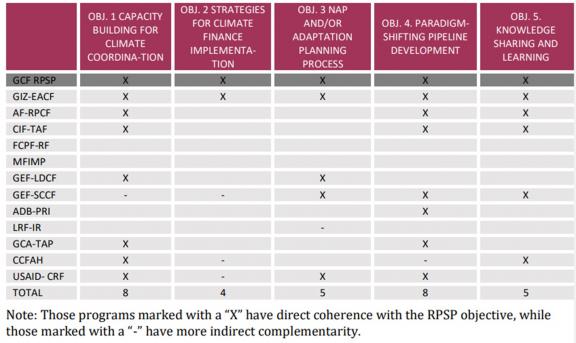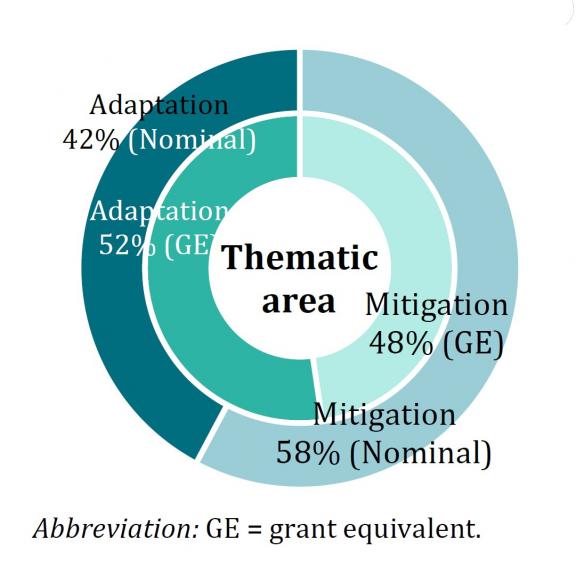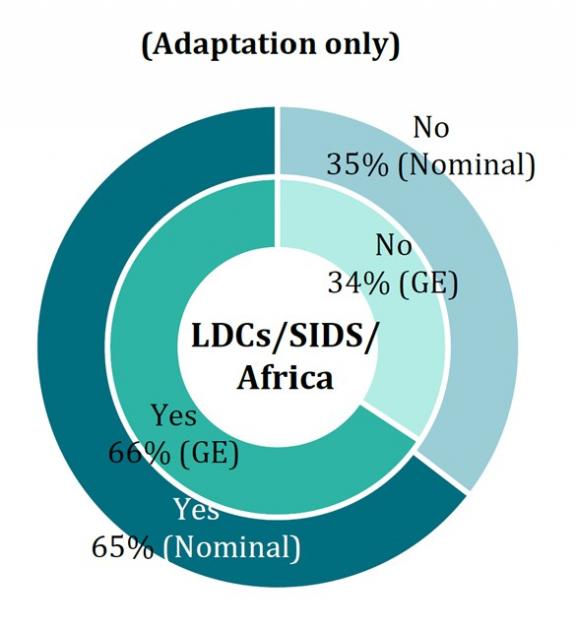B.36 Data outlook: funding proposals for the Board’s consideration
The thirty-sixth meeting of the GCF Board (B.36) will take place from July 10 to 13 in Songdo, South Korea. B.36 holds special significance as the Board is scheduled to finalize the deliberations on the update of the GCF Strategic Plan for 2024-2027 (USP). In anticipation of my second Board meeting, this blog looks at the funding proposals to be considered at B.36 and provides a preview of the GCF’s overall portfolio if all of them are approved.
A key consideration for the USP is the GCF’s Readiness and Preparatory Support Programme (RPSP). The IEU first evaluated the RPSP in 2018 (RPSP 2018) and is conducting a second review in 2023 (RPSP 2023). Since joining the IEU earlier this year, I have learned that asking questions is critical to the evaluation process. So, I’d like to start by delving into some of these questions about the GCF’s RPSP.
Q1. What does Readiness mean for the GCF?
The RPSP aims to enhance developing countries’ capacity to access and effectively use climate finance. It provides financial and technical support to countries to strengthen their institutional and technical capacities, develop strategic frameworks, and undertake activities that will help them to access and implement GCF-funded projects and programs.
In 2018, the independent evaluation of the RPSP led to improvements in the GCF's Readiness strategy, ensuring better alignment with country priorities, stronger monitoring and evaluation mechanisms, improved coordination, and increased support for direct access entities (DAEs). Subsequently, in decision B.34/06, the Board commissioned the independent evaluation of the RPSP to assess its progress, results and outcomes, effectiveness and efficiency. In March 2023, the IEU published the second RPSP’s evaluation synthesis note, providing preliminary lessons learned to support the development of a new RPSP strategy. For B.36, the IEU submitted an additional evaluation deliverable that drew upon key findings from previous evaluations, available evidence, a preliminary landscape study and several strategic considerations.
Q2. What do we know about RPSP from the GCF portfolio?
As the world’s largest climate capacity building programme, the GCF RPSP has a highly relevant role and many proven strengths. However, there is still room for improvement. As reflected in the B.36 RPSP deliverable, the IEU has identified that the lack of clarity regarding specific targets or strategic choices may fragment country level interventions. Additionally, it seems disconnected from the goals of the GCF's project preparation facility, creating uncertainty regarding the outcome of any RPSP support. Moreover, implementing the RPSP frequently depends on collaborating with national designated authorities and under-resourced delivery partners, while having minimal engagement with the GCF. This may risk restricting access to actors with the highest capacity to navigate application procedures but whose priorities may not necessarily align with the most critical readiness needs. Lastly, RPSP has yet to showcase effective knowledge management and lesson learning.
In light of these factors, the IEU suggests several strategic considerations. Firstly, RPSP requires clearly articulating readiness’s purpose and a well-defined narrative to effectively target its resources. Secondly, RPSP must align fully with the USP and the overall direction of the GCF's global role, incorporating GCF priorities such as investment planning for nationally determined contributions, private sector engagement, and post-accreditation support. Suggested priorities include strengthening capacity, developing holistic investment plans, addressing adaptation needs, and promoting stakeholder engagement. The GCF should also shift towards a more holistic systems approach and periodically reassess RPSP's scope to stay aligned with evolving GCF policies and strategies.
Readiness support outside of the GCF
According to the IEU RPSP evaluation team, other development partners offer readiness or similar support for general climate finance or specifically for the GCF. The IEU RPSP evaluation team examined 12 readiness programs similar to the RPSP in other funds. Most of these programmes (nine out of 12) are directly related to climate finance, with a stronger emphasis on adaptation (six out of nine). Apart from the GCF RPSP, three programmes specifically focus on accessing the GCF: Global Centre on Adaptation’s Technical Assistance Program (GCA-TAP), GiZ,[1] and the Commonwealth Climate Finance Access Hub. As table 1 indicates, the evaluation team's analysis reveals that the objectives of many readiness providers overlap with those of the GCF RPSP (Table 1).
Table 1. Alignment of comparator support with RPSP objectives
Source: Report on the activities of the Independent Evaluation Unit
Q3. How far has the GCF RPSP come?
As of June 2023, the GCF has approved USD 522.2 million for RPSP support through 702 grants (see here). Generally, readiness support is primarily provided through grants and technical assistance, with implementation partners playing a significant role.
GCF’s initial Readiness programme (henceforth referred to as RPSP 1.0) was for the period 2015-2018, while the revised RPSP Strategy (RPSP 2.0) is for the period 2019-2021 (extended to 2022-2023 by decision B.33/04 (b)). The RPSP 2023 synthesis note presents findings and lessons under the five objectives of RPSP 2.0 for further improvement.
Table 2. Findings by RPSP 2.0 objective
| Objective | Finding/lessons |
|---|---|
|
1. Capacity building for climate finance coordination |
|
|
2. Strategic frameworks for low-emission investment |
|
|
3. Strengthened adaptation planning |
|
|
4. Paradigm-shifting Pipeline development |
|
|
5. Knowledge sharing |
|
Source: Synthesis Note
Now, let’s look at the funding proposals to be presented at the Board Meeting and how they will affect the overall GCF portfolio.
Newly proposed funding proposals (FPs) for GCF’s 36th Board Meeting
During B.36, 12 new projects will be presented for the Board’s approval, as indicated in Table 3. If all the funding proposals are approved, it would add USD 755.8 million to the GCF portfolio, bringing it to USD 3185.0 million, including co-financing.
Table 3. Funding proposals under consideration at B.36
Source: GCF B.36 Consideration of funding proposals
Maintaining 50:50 balance in adaptation and mitigation: GCF portfolio by theme
The GCF focuses its investments on achieving maximum impact in the developing world and driving transformative changes (paradigm shifts) in both mitigation and adaptation. The GCF's investment framework seeks to achieve a 50:50 balance between adaptation and mitigation activities over time, recognizing that both are important for addressing climate change.
According to the IEU’s second performance review of the GCF, the Fund may be unable to meet its allocation target for adaptation, despite the robust pipeline of adaptation projects. This uncertainty casts doubt on the GCF's ability to meet the USP objectives.
Of the 12 funding proposals to be presented at B.36, eight fall under adaptation and four under mitigation. According to the GCF, on a thematic, nominal basis, USD 550.5 million (73 %) is allocated for adaptation and USD 205.3 million (27 %) for mitigation. In grant equivalent terms, USD 363.2 million (85%) accounts for adaptation and USD 64.1 million (15%) for mitigation.
If all FP.36 were approved, the overall GCF portfolio would still present a strong adaptation portfolio post B.36. As shown in Figure 1, in grant equivalent, USD 4.1 billion (52 %) would be allocated for adaptation and USD 3.8 billion (48 %) for mitigation. In nominal terms, USD 5.4 billion (42 %) will be allocated for adaptation and USD 7.4 billion (58 %) for mitigation. This change represents a modest improvement from the B.35 portfolio, moving closer to a 50:50 ratio in adaptation and mitigation.
Figure 1. Projected portfolio by thematic area
Source: GCF B.36 Consideration of funding proposals
Figure 2. Thematic balance of B.36 funding proposals vs overall GCF portfolio
Source: GCF B.36 Consideration of funding proposals
Prioritising vulnerable countries: GCF portfolio by priority group, Small Island Developing States, Least Developed Countries and Africa
The GCF also aims to allocate at least 50 per cent of adaptation funding for particularly vulnerable countries, including Least Developed Countries (LDCs), Small Island Developing States (SIDS), and African States. These countries are regarded as highly vulnerable to climate change’s adverse effects and face urgent and immediate needs.
Additionally, AFR2022, submitted at B.35, found that the GCF's portfolio in Africa demonstrates a bias towards mitigation-related results areas. African state stakeholders have advocated rebalancing the portfolio to prioritize adaptation, considering the tangible and immediate climate impacts affecting their daily lives.
The regional allocation of funding proposals to be presented at B.36 is shown in Figure 3. Of the 228 funding proposals in the projected portfolio, 152 projects and programmes will wholly or partly target the LDCs, SIDS and/or African States. Within the GCF funding for adaptation, vulnerable countries will be allocated USD 2.7 billion (66%) in grant equivalent terms. In nominal terms, this equals USD 3.5 billion (65%) (as shown in Figure 4).
Figure 3: Projected regional distribution of GCF funding (in USD)
Source: GCF B.36 Consideration of funding proposals
Figure 4: GCF funding amount by vulnerable countries, including LDCs/SIDs/African States (adaptation only)
Source: GCF B.36 Consideration of funding proposals
Diversifying financial instruments: GCF portfolio by financial instruments
One observation from the second performance review was that GCF’s financial instruments were not diverse enough. They were heavily weighted towards loans and grants, while other forms, such as results-based payments and guarantees, remained underexplored. This is reflected in the projected GCF funding, as shown in Figure 5. If all 36 funding proposals were approved, there would still be an uneven distribution among different financial instruments. Loans would account for the largest share, amounting to USD 5.3 billion (42%). The remaining portion would consist of grants totalling USD 5.2 billion (41%), equity USD 1.4 billion (11%), results-based payments USD 496.7 million (4%), and guarantees USD 361.5 million (3%).
Figure 5: Projected GCF funding amount by financial instrument (in USD) as of B.36
Source: GCF B.36 Consideration of funding proposals
Wrap-up
As the largest multilateral climate fund, the GCF plays a crucial role in translating innovative ideas into action. It utilizes diverse funding mechanisms and climate financing instruments to support climate-vulnerable nations. While it is commendable that RPSP has improved by taking on IEU’s recommendations and the adaptation-to-mitigation ratio has inched closer to 50:50, there is certainly room for improvement, including diversification of financial instruments.
As mentioned earlier, B.36 bears particular importance as the Board prepares to finalize the USP that will shape the GCF’s next three years. I hope the final USP enables the GCF to adapt and respond effectively to emerging trends, technologies, and priorities while incorporating lessons learned from past experiences. Additionally, the USP will allow the GCF to align its activities with global climate goals and commitments, including those outlined in the Paris Agreement, fostering greater coherence and effectiveness in its operations.
[1] Deutsche Gesellschaft für Internationale Zusammenarbeit - the main German development agency
Disclaimer: The views expressed in blogs are the authors's own and do not necessarily reflect the views of the Independent Evaluation Unit of the Green Climate Fund.








